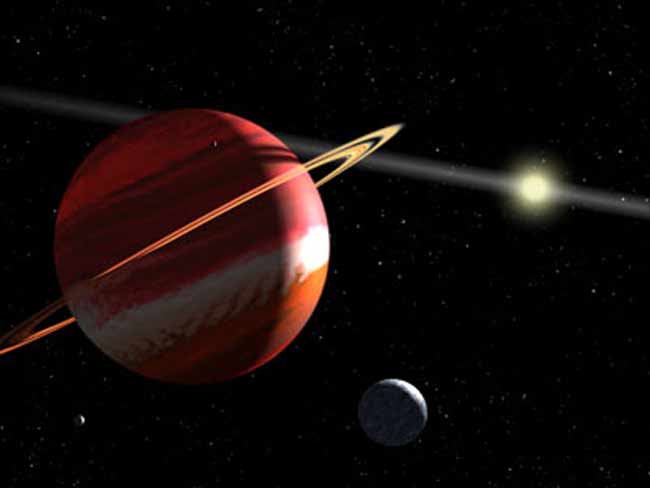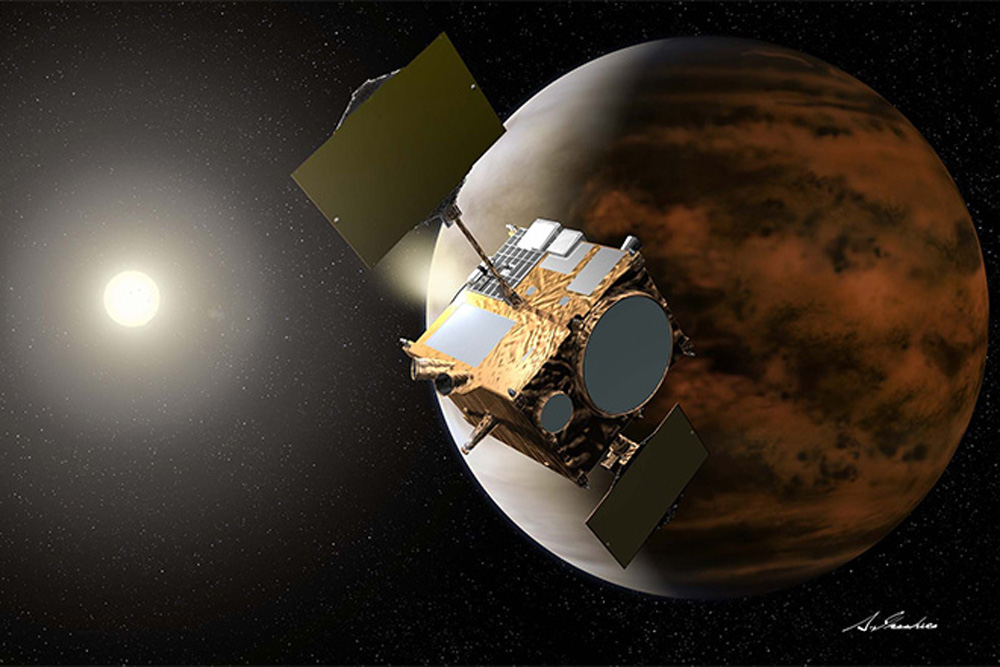Nearest Planet Beyond Solar System Might Be Photogenic

The closest planet outside our solar system orbits a young Sun-like star only10.5 light years away--so close that telescopes might soon be able to snappictures of it, new observations confirm.
About 1.5more massive than Jupiter, theplanet takes 7-years to circle its star,Epsilon Eridani. The giant gas planet was originally detectedin 2000, when astronomers noticed a rocking motion in the star which theyattributed to the gravitational tug of an unseen planet. Astronomers recently confirmedthe wobblesand the planet's existence with NASA's Hubble Space Telescope.
Astronomersthink enough starlight might be reflected off the planet [image]when it makes its nearest approach to Epsilon Eridani in 2007 for Hubble andother telescopes to image it.
The Hubble observationsalso revealed that the planet orbits Epsilon Eridani on the same plane as the star'sdisk of gas and dust. The finding marks the first time that the two objectshave been observed at the same inclination around the same star and supportsthe theory that planetsform from such disks.
If moonscircle the planet, they might have temperatures similar to Earth's and possiblyliquid water, said study team-member Fritz Benedict at the University of Texas.
However,the planet's orbit takes it so far from its star that any oceans on the moonswould freeze. However, life could potentially survive on such moons if theywere massive enough to retain a dense heat-trapping atmosphere like Saturn's moon, Titan,Benedict added.
A secondplanet with a longer orbit might also circle Epsilon Eridani, but this has yetto be confirmed, fellow team member, Barbara McArthur, also of the University of Texas, told SPACE.com.
Breaking space news, the latest updates on rocket launches, skywatching events and more!
The studywas presented today at the 38th Annual Division of PlanetarySciences Meeting in Pasadena California, and will be detailedin the Nov. issue of Astronomical Journal.
- Top 10 Star Mysteries
- Search for Another Earth Quietly Underway
- Top 10 List of Habitable Stars to Guide Search
- Planet Puzzle: Theorists Wrestle with How They're Built
Join our Space Forums to keep talking space on the latest missions, night sky and more! And if you have a news tip, correction or comment, let us know at: community@space.com.
Ker Than is a science writer and children's book author who joined Space.com as a Staff Writer from 2005 to 2007. Ker covered astronomy and human spaceflight while at Space.com, including space shuttle launches, and has authored three science books for kids about earthquakes, stars and black holes. Ker's work has also appeared in National Geographic, Nature News, New Scientist and Sky & Telescope, among others. He earned a bachelor's degree in biology from UC Irvine and a master's degree in science journalism from New York University. Ker is currently the Director of Science Communications at Stanford University.
